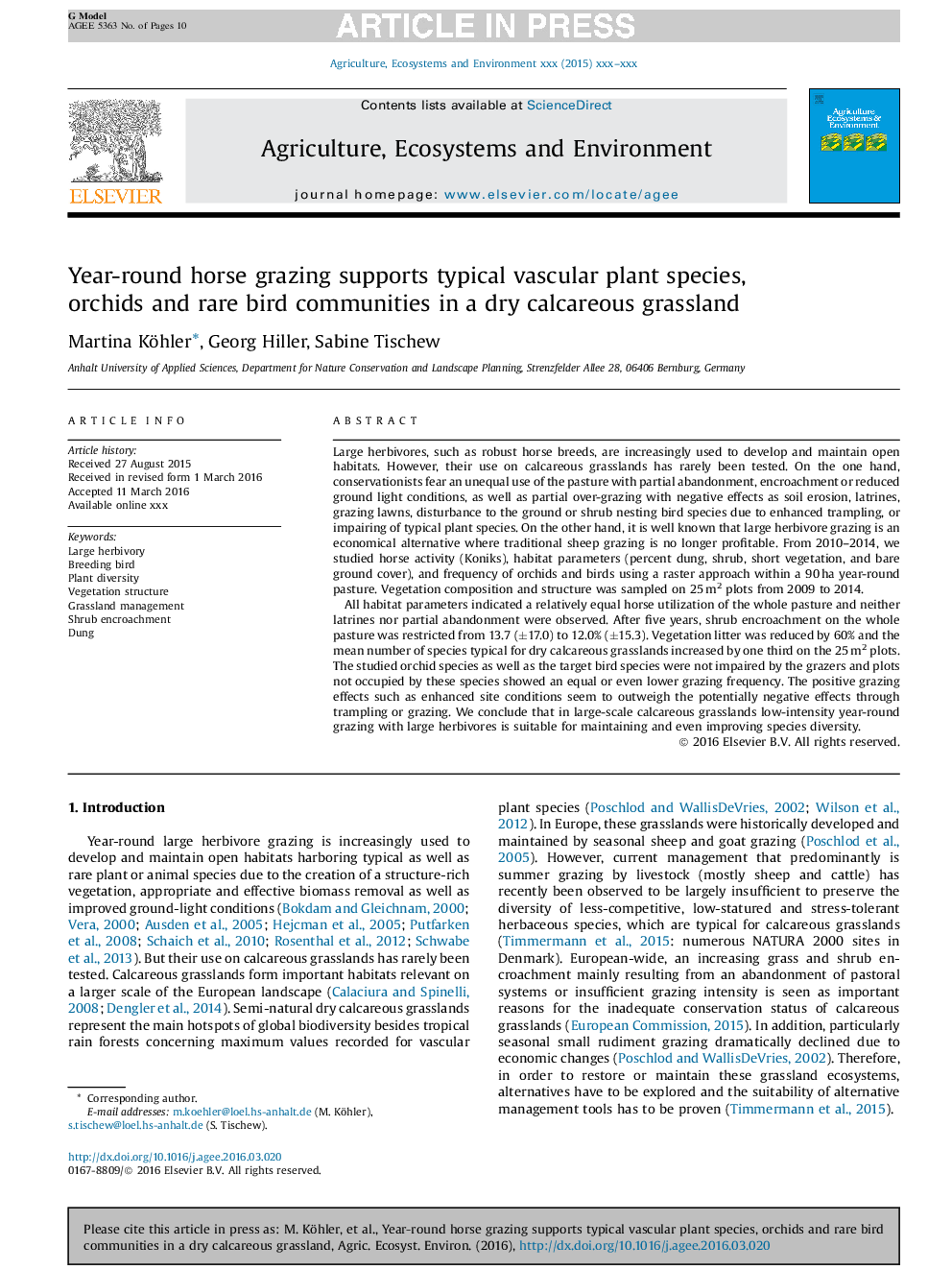| Article ID | Journal | Published Year | Pages | File Type |
|---|---|---|---|---|
| 5538122 | Agriculture, Ecosystems & Environment | 2016 | 10 Pages |
Abstract
All habitat parameters indicated a relatively equal horse utilization of the whole pasture and neither latrines nor partial abandonment were observed. After five years, shrub encroachment on the whole pasture was restricted from 13.7 (±17.0) to 12.0% (±15.3). Vegetation litter was reduced by 60% and the mean number of species typical for dry calcareous grasslands increased by one third on the 25 m2 plots. The studied orchid species as well as the target bird species were not impaired by the grazers and plots not occupied by these species showed an equal or even lower grazing frequency. The positive grazing effects such as enhanced site conditions seem to outweigh the potentially negative effects through trampling or grazing. We conclude that in large-scale calcareous grasslands low-intensity year-round grazing with large herbivores is suitable for maintaining and even improving species diversity.
Related Topics
Life Sciences
Agricultural and Biological Sciences
Agronomy and Crop Science
Authors
Martina Köhler, Georg Hiller, Sabine Tischew,
